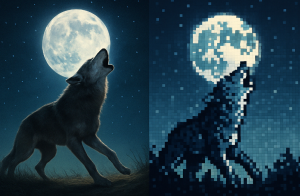
Human-Wolf Relations: A Deep-Rooted Connection Shaping Our Past and Present
Human-wolf relations have fascinated scholars, conservationists, and the general public alike for centuries. From the deep prehistoric bond that paved the way for domestic dogs to modern-day efforts to balance wolf conservation with human interests, our intertwined history with these enigmatic canids is rich, complex, and continues to evolve.
Tracing the Deep History of Human and Wolf Interactions
Recent research has shed light on the ancient beginnings of human and canid relationships. A study from subarctic Alaska documents how humans and large canids—including wolves, dogs, and coyotes—shared a mutualistic bond during the terminal Pleistocene, setting the stage for domestication and further interaction Lanoë et al., Science Advances. Key findings from this research include:
- Evidence of diverse canid species associated with human occupations.
- Morphological and dietary variations demonstrating the early influence of human interaction.
- Insights into the evolution of social bonds that later influenced domestication.
This research emphasizes that human-wolf relations are not a modern phenomenon, but rather a profound connection that has ancient roots.
Behavioral Insights: Understanding Wolf and Dog Temperaments
Modern behavioral studies continue to contribute to our understanding of how wolves interact with humans. Experiments comparing equally raised and kept wolves with dogs have revealed that age and the presence of a familiar human significantly influence both groups’ risk-proneness when encountering potential stressors Jean-Joseph et al., PLOS ONE. Notably, the research highlighted:
- Both wolves and dogs became bolder with age.
- Familiar human presence increased the likelihood that the animals would approach a source of food.
- Risk-taking appears to be more influenced by age and social context than by inherent species differences.
These findings help us appreciate the nuanced behavioral adaptations that support coexistence and even cooperation between humans and wolves.
Cultural and Ecological Dimensions in Modern Landscapes
Human interactions with wolves have not only involved domestication or behavioral temperaments; they also encompass complex cultural and ecological dimensions. For instance, research from the Indian subcontinent has explored how Indian gray wolves select den sites in tribal landscapes, highlighting the interplay between ecological factors and local cultural practices (Iqbal et al., Scientific Reports). Essential insights from this study include:
- Wolves favor areas with steep slopes, abundant Sal (Shorea robusta) trees, and dense shrub cover.
- Cultural associations with key landscape features can indirectly aid in wolf conservation by reducing human disturbances.
- The integration of traditional practices with conservation planning is proving crucial in fostering human-wolf coexistence.
This holistic perspective underlines the importance of incorporating indigenous knowledge and ecological needs in modern wildlife management strategies.
- Ancient canine domestication
- Behavioral ecology of wolves
- Human-canine mutualism
Conclusion
The relationship between humans and wolves is a striking example of how intertwined our evolutionary and cultural histories can be. From the ancient mutualistic bonds observed in early human societies to the modern challenges of conservation and coexistence, research paints a multifaceted picture of interaction. Continued exploration into behavioral studies, ecological research, and cultural insights promises to further inform and enhance efforts to preserve both this unique relationship and the species involved.
Sources
- Lanoë, F. et al. (Year not specified). “Late Pleistocene onset of mutualistic human/canid relationships in subarctic Alaska.” Science Advances. DOI: 10.1126/sciadv.ads1335
- Jean-Joseph, H. et al. (Year not specified). “Decreased risk-proneness with increasing age in equally raised and kept wolves and dogs.” PLOS ONE. DOI: 10.1371/journal.pone.0313916
- Iqbal, S. et al. (Year not specified). “Den site selection by Indian gray wolves in tribal landscapes of Mahuadanr Wolf Sanctuary considering ecological and cultural factors.” Scientific Reports. DOI: 10.1038/s41598-025-94417-z
This synthesis of historical and contemporary findings underscores the dynamic and continuing influence humans have on wolf populations—and vice versa—informing both conservation strategies and our broader understanding of human-animal interactions.



